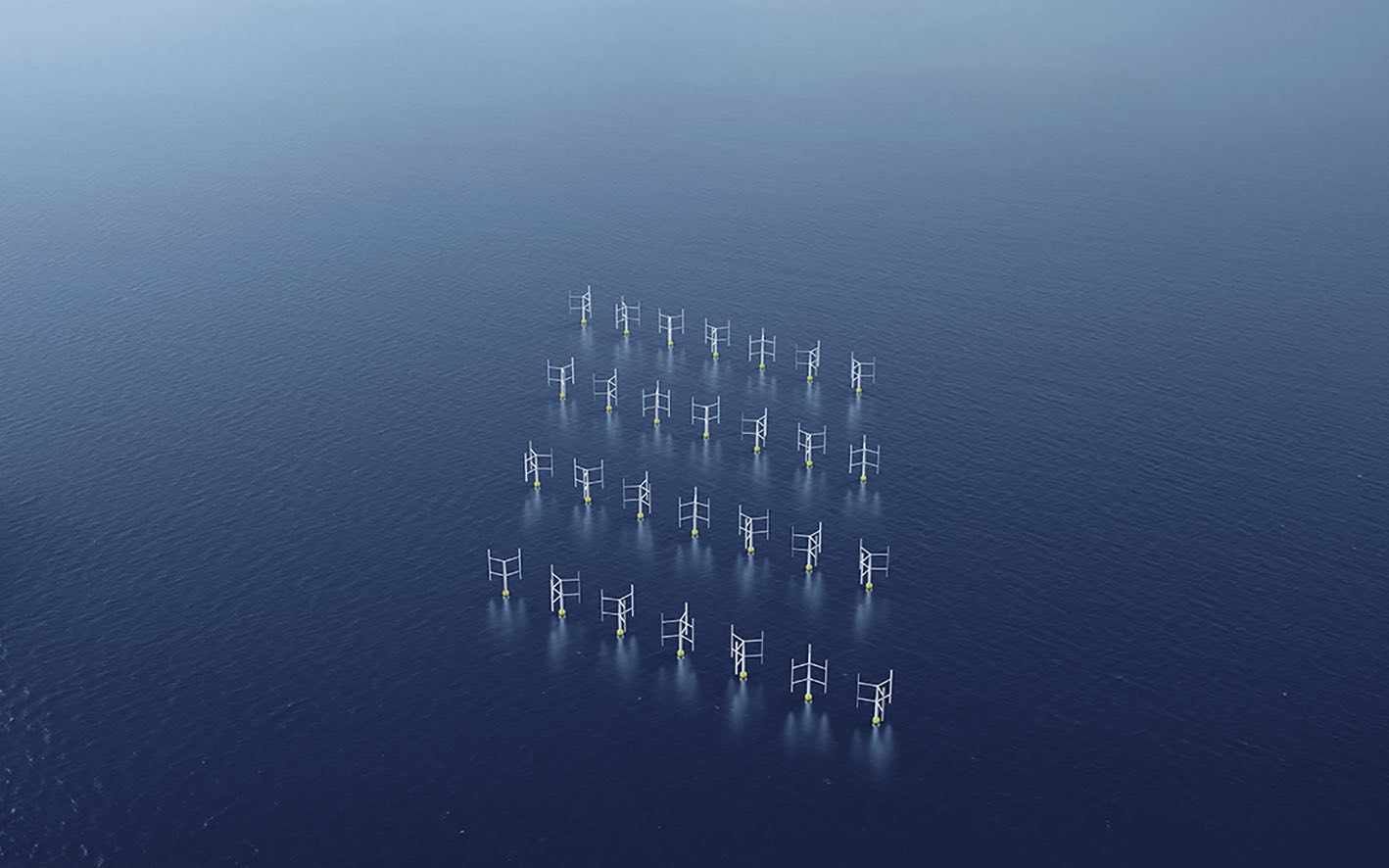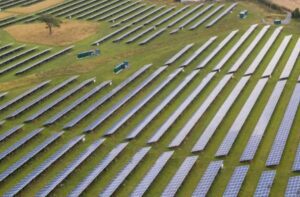A new study published last month by researchers at Oxford Brookes University in England has raised the possibility that traditional propeller wind turbines be replaced by more compact and efficient vertical wind turbines.
The standard wind turbine is the three-blade propeller wind turbine, also known as a Horizontal Axis Wind Turbine (HAWT), and are generally assumed to be the future of wind energy technology, in both onshore and offshore projects.
However, new research from Oxford Brookes University, a public research university in Oxford, England, has found that the vertical turbine design is far more efficient than traditional turbines in large scale wind farms.
Moreover, the research found that when vertical wind turbines are set in pairs, they can increase each other’s performance by up to 15%.
The study, based on more than 11,500 hours of computer simulation, showed that wind farms could potentially perform more efficiently by substituting traditional propeller wind turbines with Horizontal Axis Wind Turbines (HAWTs) for compact Vertical Axis Wind Turbines (VAWTs).
Unlike a traditional propeller wind turbine, which has blades spinning around an axis horizontal to the ground, compact vertical wind turbines spin around an axis vertical to the ground.
One of the biggest and long-known issues with horizontal propeller wind turbines, specifically when built in large numbers – either onshore or offshore – is the impact one turbine has on the next turbine in sequence, reducing available wind resources and necessitating strategic turbine layouts.
“Modern wind farms are one of the most efficient ways to generate green energy, however, they have one major flaw: as the wind approaches the front row of turbines, turbulence will be generated downstream,” said lead author of the report and Bachelor of Engineering graduate Joachim Toftegaard Hansen.
“The turbulence is detrimental to the performance of the subsequent rows.
“In other words, the front row will convert about half the kinetic energy of the wind into electricity, whereas for the back row, that number is down to 25-30%. Each turbine costs more than £2 million/MW.
“As an engineer, it naturally occurred to me that there must be a more cost-effective way.”
However, according to the Oxford Brookes research, vertical wind turbines do not suffer from this issue, and instead increase each other’s performance when arranged in grid formations.
“This study evidences that the future of wind farms should be vertical,” said Professor Iakovos Tzanakis, who led the research by a team from the School of Engineering, Computing and Mathematics (ECM) at Oxford Brookes.
“Vertical axis wind farm turbines can be designed to be much closer together, increasing their efficiency and ultimately lowering the prices of electricity. In the long run, VAWTs can help accelerate the green transition of our energy systems, so that more clean and sustainable energy comes from renewable sources.”
The Oxford Brookes researchers believe their new findings, laid out in an article published in the journal Renewable Energy, “Numerical modelling and optimization of vertical axis wind turbine pairs: A scale up approach”, could act as a stepping stone towards designing more efficient wind farms, understanding large scale wind energy harvesting methods, and ultimately improving wind energy technology so that it can more quickly replace fossil fuels.
Scaling up wind farm deployment is a vital step in decarbonising the global energy mix, and according to the Global Wind Report 2021, the world needs to be installing wind power three times faster over the next decade so as to meet net zero targets and avoid the worst impacts of climate change.
A recent study from researchers at LUT University in Finland laid out its modelled approach to decarbonising the global energy mix, in which solar power generates as much as 76% of global electricity demand by the middle of the century.
However, even the LUT researchers acknowledged that wind energy must serve as the major source of renewable energy generation by 2030, supplying as much as 42% of global electricity supply by the end of this decade.
LUT’s research, however, relies on existing assumptions and figures relating to wind energy production, and is naturally unable to predict the impact of future economic and efficiency improvements in the technology.
This new study from Oxford Brookes, then, is one example of how wind technology may end up becoming more efficient and cost-effective.
The Oxford Brookes study is the first to comprehensively analyse many aspects of wind turbine performance with regards to array angle, direction of rotation, turbine spacing, and number of rotors.
The study is also the first research to investigate whether the performance improvements hold true for three VAWT turbines set in a series.
“The importance of using computational methods in understanding flow physics can’t be underestimated,” said Dr Mahak, a co-author of the article and Senior Lecturer in ECM at Oxford Brookes.
“These types of design and enhancement studies are a fraction of the cost compared to the huge experimental test facilities. This is particularly important at the initial design phase and is extremely useful for the industries trying to achieve maximum design efficiency and power output.”








